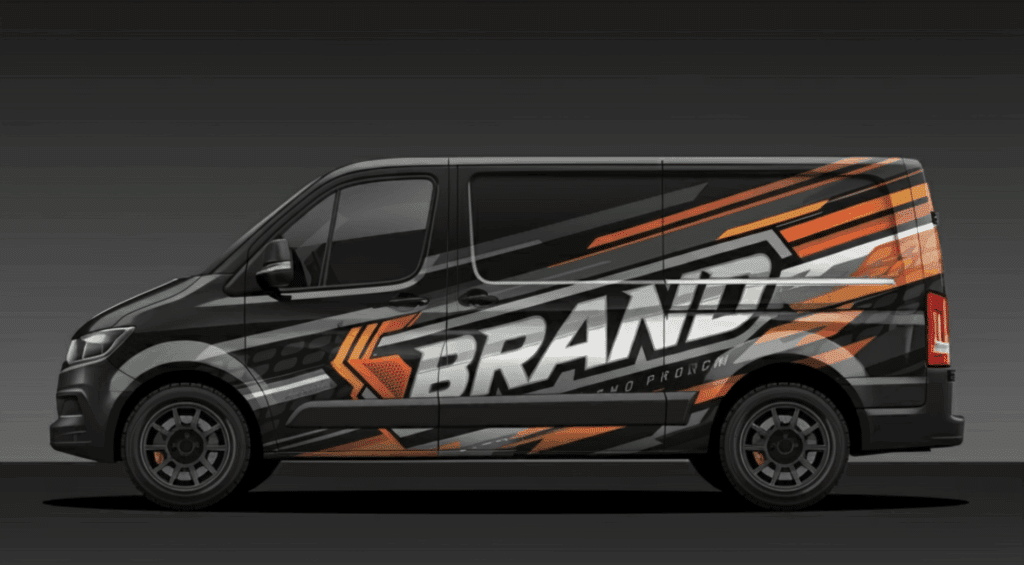Commercial Car Wrap Psychology
When it comes to advertising, many business owners think of Google Ads, social media, or flyers. But there’s one powerful and often overlooked tool that turns heads every single day — the commercial car wrap.
Car wraps turn your vehicle into a moving billboard. But they’re not just about being eye-catching. The psychology behind them plays a huge role in how people perceive your brand, remember your message, and decide to take action.
Let’s explore how to use a car wrap to gain visibility, build trust, and grow your business — all by simply driving around town.

First Impressions on Wheels: Why Your Commercial Car Wrap Matters
People form first impressions in under a second. A branded vehicle is no exception. A well-designed car wrap communicates your message before you say a single word.
Here’s how to make that impression count:
- Color Psychology: Red sparks action, blue builds trust, yellow adds friendliness, and black suggests luxury.
- Typography: Big, clean, and easy-to-read fonts signal professionalism and make your message easy to scan.
- Layout: Balanced design with breathing space looks more credible and visually appealing.
Pro tip: According to Psychology Today, first impressions stick. Your wrap should be clean, bold, and trustworthy from the start.
Familiarity Breeds Trust: Drive the Same Routes, Get More Calls
The mere exposure effect is a well-known psychological principle. People naturally prefer what they see often.
Car wraps are great for this. Driving the same school runs or busy roads daily helps you build:
- Brand recognition
- Trust and familiarity
- Repetition that sticks
Think of it this way: the more people see your van, the more “familiar” you become — and people tend to hire businesses they feel they know.
(For more on this, see the exposure effect on Verywell Mind.)
The Professional Vehicle Effect: Why Wraps Build Instant Credibility
Ever seen a plain white van with no branding? It feels uncertain. Now picture one with a clean wrap, company name, service, and phone number.
Which one feels more trustworthy?
A professionally wrapped van says:
- We’re established
- We care about our work
- You can count on us
It’s a small detail that sends a big message — and it often leads to more trust and higher conversions.
Why a Commercial Car Wrap is the Ideal Passive Advertisement
Most ads interrupt people — pop-ups, radio, YouTube ads. Car wraps do the opposite.
They blend into daily life while still grabbing attention. That makes them a great example of ambient marketing — ads that don’t feel like ads.
Why they work:
- They’re unexpected
- They feel like part of the environment
- They repeat the message without being annoying
- They work 24/7 — without monthly ad spend
Visual Psychology: How Color, Shape & Fonts Shape Perception
Your wrap is more than a design — it’s a message in visual form.
Color
- Red = Energy or urgency
- Blue = Trust and reliability
- Yellow = Optimism
- Black = Elegance and luxury
Shape
- Rounded edges = Friendly, inviting
- Sharp angles = Strong, bold, assertive
Typography
- Sans-serif (e.g., Arial): Modern, clean
- Serif (e.g., Times New Roman): Traditional, professional
When these elements align with your brand tone, they trigger emotional alignment and leave a lasting impression.
The Brain Loves Motion: Why Movement Improves Memory
Moving vehicles draw more attention than static signs — and that matters.
Studies show transit advertising (like car wraps) has a 20% higher recall rate than stationary billboards. Why? Movement triggers memory retention. Your brain locks on.
So you’re not just getting noticed — you’re being remembered.
This matters most in competitive industries where staying top-of-mind is the game.
How to Design a Wrap That Works (Psychologically & Practically)
Use this checklist to design wraps that actually work:
- High contrast colors: White on blue, black on yellow — catches the eye
- Clear contact info: Easy to read in under 2 seconds
- One strong call to action: “Call Now” or “Get a Quote”
- Consistent branding: Match your wrap’s style to your site and socials
- No clutter: 1 logo, 1 service, 1 CTA
- (Optional) Human faces: People relate to people
These tweaks reduce confusion and guide attention — helping people take action faster.
Real-Life Wins: How Businesses Benefited from Car Wraps
Joe’s Plumbing – Local Legend
Joe wrapped his van in bright blue, added a cartoon mascot with a wrench and big phone number.
In 3 months, he picked up 5 new clients — all from people who saw the van. The wrap did the marketing.
Luxe Detailing – Premium Perception
Luxe went for a matte black wrap with gold lettering — no images, just clean design.
Before running a single ad, calls were already coming in. People saw the car, Googled them, and booked.
Final Thoughts: More Than a Wrap — It’s a Marketing Mind Game
A commercial car wrap isn’t just a moving ad. It’s a mix of psychology, design, and smart strategy that:
- Makes first impressions
- Builds familiarity
- Earns trust
- Increases recall
- Drives action
If you want long-term, cost-effective brand awareness, this is one of the smartest moves you can make.
Even when you’re parked, your wrap is still working.
